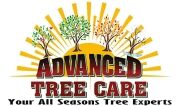Urban landscapes, with their bustling streets and towering structures, present a unique set of challenges for the trees that inhabit them. Amidst concrete jungles, trees face issues such as compacted soil, pollution, and limited root space, requiring specialized care to thrive. In this exploration of urban forestry, we delve into the intricacies of the challenges faced by urban trees and the innovative solutions implemented by tree experts. Backed by statistical data, this article sheds light on the impact of urbanization on tree health and the success rates of various urban forestry strategies.
Understanding the Challenges of Urban Trees
Compacted Soil: The Silent Threat to Root Health
Discuss the impact of compacted soil on tree root systems in urban environments. Explore how soil compaction restricts root growth and nutrient absorption, leading to increased stress and susceptibility to diseases. Provide statistical data on the prevalence of compacted soil in urban settings and its correlation with tree health.
Air Pollution: Navigating the Urban Atmosphere
Examine the detrimental effects of air pollution on tree foliage and overall health. Discuss how pollutants, such as ozone and particulate matter, impact photosynthesis, respiratory functions, and nutrient uptake in urban trees. Back insights with statistical data on air quality indices in urban areas and their correlation with tree decline.
Limited Root Space: Overcoming Spatial Constraints
Delve into the challenges posed by limited root space in urban environments. Discuss how competing infrastructure and confined planting areas restrict the expansion of tree root systems. Provide statistical insights into the prevalence of trees with restricted root space in urban landscapes and their increased vulnerability to stress.
Innovative Solutions in Urban Forestry
Soil Aeration Techniques: Breathing Life into Compacted Soils
Explore soil aeration as a key strategy to alleviate soil compaction and promote root health. Discuss the use of techniques such as air spading and vertical mulching to improve soil structure. Provide statistical data on the success rates of soil aeration in mitigating the impact of compacted soil on urban trees.
Biofiltration Systems: Clearing the Urban Air
Discuss the implementation of biofiltration systems, such as tree filters and green walls, to mitigate air pollution in urban environments. Explore how these systems enhance air quality by capturing pollutants and promoting microbial activity. Back insights with statistical data on the effectiveness of biofiltration in reducing air pollution levels.
Root Zone Expansion: Maximizing Limited Space
Delve into innovative approaches to expanding the root zones of urban trees. Discuss strategies like structural soil installation, suspended pavement systems, and root barriers to optimize available space. Provide statistical insights into the success rates of root zone expansion techniques in promoting tree health in constrained urban settings.
Statistical Insights into Urban Forestry Impact
Tree Health Indices in Urban Areas: Monitoring Urban Forest Vitality
Present statistical data on tree health indices specific to urban areas. Explore how parameters like canopy cover, growth rates, and disease incidence serve as indicators of the overall health of urban trees. Discuss the correlation between tree health indices and the success of urban forestry initiatives.
Success Rates of Urban Forestry Programs: A Comparative Analysis
Conduct a comparative analysis of the success rates of urban forestry programs implemented in different cities. Discuss how factors such as community involvement, funding, and tailored strategies contribute to the effectiveness of these programs. Provide statistical insights into the positive outcomes achieved by cities investing in urban forestry.
Tips for Urban Tree Care: Navigating the Concrete Jungle
Selecting Resilient Tree Species:
Advise urban planners and property owners on the importance of selecting tree species that are resilient to urban stressors. Discuss statistical data on the success rates of resilient species in thriving amidst compacted soil and pollution.
Implementing Green Infrastructure:
Encourage the integration of green infrastructure in urban planning to create spaces that support tree health. Discuss statistical insights into the benefits of green roofs, permeable pavements, and urban parks in promoting urban tree vitality.
Community Engagement and Education:
Stress the importance of community engagement and education in fostering a culture of urban tree care. Discuss statistical data on how informed communities contribute to the success of urban forestry initiatives.
Conclusion: Nurturing Urban Trees for Future Generations
In conclusion, urban forestry is a dynamic field that addresses the unique challenges faced by trees in urban environments. Through innovative solutions, backed by statistical data, tree experts navigate the complexities of compacted soil, pollution, and limited root space to foster thriving urban forests. Explore our commitment to urban tree care at Advanced Tree Care, where expertise meets a dedication to creating green oases amidst the urban sprawl. At Advanced Tree Care, we believe in the transformative power of informed care to nurture urban trees that stand as resilient sentinels of nature in the heart of the concrete jungle.
